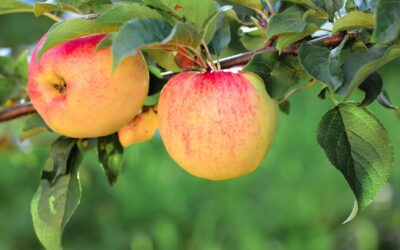Once upon a time, the eastern United States was covered in American chestnut trees – about four billion of them, in fact! They were a popular choice for building furniture, fences, and other structures while also providing nuts to feed animals and people alike.
However, in what is considered one of the worst ecological disasters to hit the world’s forests, the American chestnut was nearly wiped out by an airborne blight fungus. The chestnut blight was first noticed in New York in 1904, and it destroyed nearly 3 billion trees within the following decades. While this tree variety is not completely extinct, it is considered “functionally extinct” because of its inability to grow enough trees to recover its population. New sprouts grow from the roots of trees when the previous main stem has died off, but they don’t have a chance to reach maturity before they are also diseased.
Check out this video from the University of Tennessee’s Institute of Agricultre to learn about the research they are doing on chestnut trees and to see an example of what chestnut blight looks like.
“https://www.youtube.com/watch?v=5x4eEEpEVU8”
Efforts to breed blight-resistant American chestnuts are underway. While we await the success of this rescue mission being performed by several organizations, many gardeners have turned to the Chinese chestnut as an alternative in their landscapes. It has become a popular choice because it has a similar look to the American chestnut but most importantly, it is disease-resistant. Researchers and scientists attempting to bring back the American chestnut will sometimes cross-breed surviving ones with Chinese chestnuts because of this quality.
Why is it important to bring back the American chestnut? Check out The American Chestnut Foundation’s top 10 reasons!
Chinese Chestnut Trees At A Glance
| Hardiness Zone | Zones 4-8 |
|---|---|
| Mature Size | 40′ to 60′ tall and wide, growing about 1′ to 2′ taller per year |
| Sun | Full sun (at least 6 hours of direct sunlight each day) |
| Water | Water well when first planted; drought-tolerant once established |
| Soil | Needs to be well-draining Amend heavy clay with EarthMixⓇ Organic Garden™ Premium Topsoil Blend |
| Flower | White flowers in the summer |
| Fruit | Edible Produces nuts 4 to 5 years after planted as a seed in September through October At at least 10 years old, they can produce up to 15 lbs of nuts per tree |
| Self-Pollinating | No; plant more than one tree to ensure successful pollination |
What Is The Difference Between American Chestnut Trees & Chinese Chestnut Trees?
Though the two varieties have a similar aesthetic, there are some ways to tell the difference between each one.
| American Chestnut Castanea dentata |
Chinese Chestnut Castanea mollissima |
|
|---|---|---|
| Leaves | Long and narrow with prominent teeth on its edge; thin and papery | Oval-shaped with smaller teeth; underside of the leaf is covered in fine hairs, thick and waxy |
| Fruit | ½ to 1 inch in diameter; spines are slender and 2 to 3 cm long | 1 to 1 ¼ inches in diameter; spines are thick and 1 to 2 cm long |
| Stems | Smooth; reddish brown or dark green | Hairy; tan or lighter green, has large lenticels (bumps on the stem) |
| Form | More upright | More spreading |
Find Chinese Chestnut Trees At Martin’s Home & Garden
Our Trees & Shrubs Department carries Chinese chestnut trees! Stop by our Murfreesboro garden center today to pick one up for your landscape.
Trees may not be in stock at the time you read this. Call 615-867-7121 for current availability.

